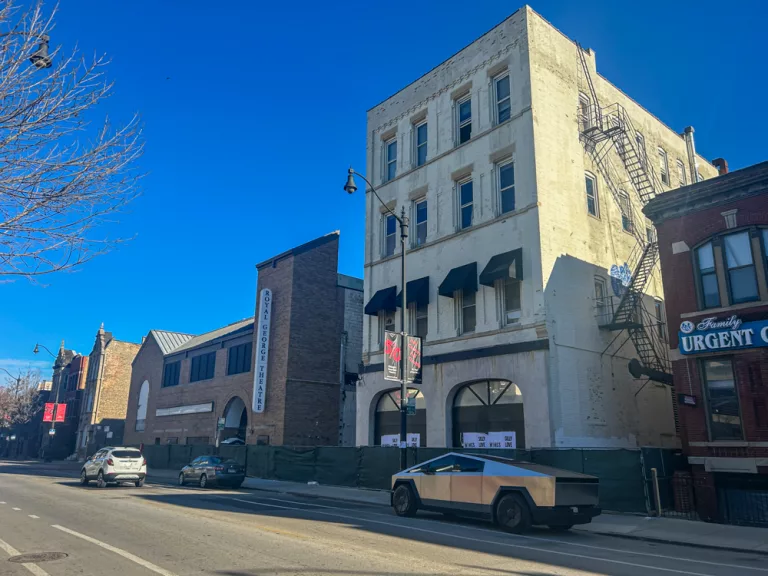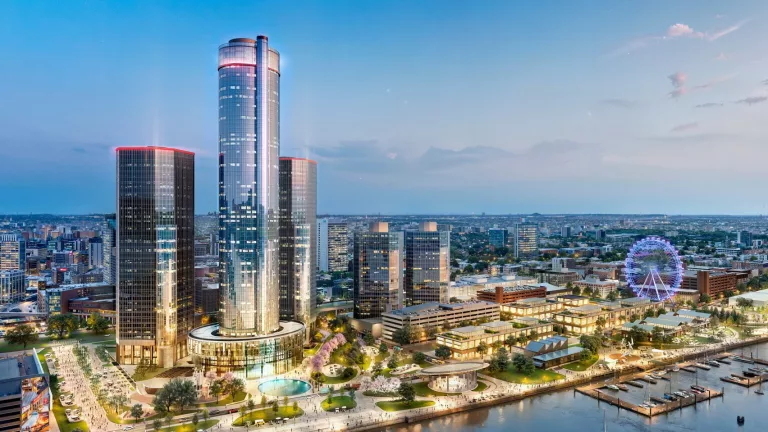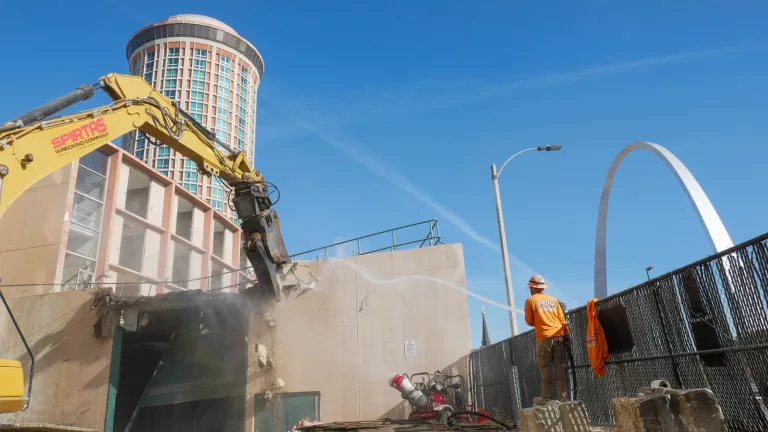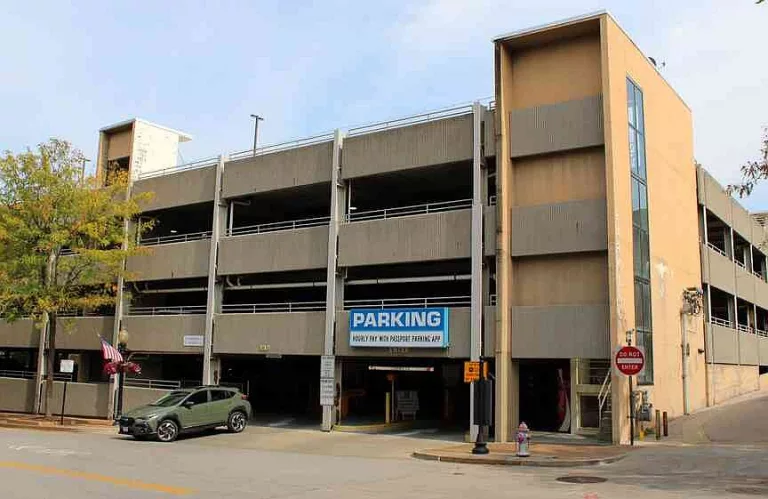
With the crunch of an excavator’s clawed bucket, the Woods Hole Steamship Authority terminal began the messy process of being reduced to a pile of rubble on Monday afternoon. Until it was closed earlier this winter, the terminal housed ticket offices and crew facilities on the first floor and administrative offices on the second floor.
The building, which dates to the 1950s when it was used as a railway station, served as the ferry terminal since 1961. It is being demolished as part of a $60 million project to build a new terminal and add a third ferry slip to the port facility.
Steamship Authority general manager Robert Davis was among those watching in Woods Hole Monday when the enormous excavator demolished the blue portico roof in front of the building and began to strip off the white cinder block exterior. A work crew sprayed the debris with water to keep the dust down. “Glad to see it go,” Mr. Davis said. “It has served its purpose.”
It took work crews about seven days to prepare the interior of the structure and the strip rooftop heating and cooling units before the excavator moved in. The demolition was about a month behind schedule, because of delays in finishing the new administration building located at the Steamship Authority’s Palmer parking lot in Falmouth.
It will take two to three days to completely demolish the building. The debris will be hauled to a Rhode Island facility that will recycle as much material as possible. That will take another two weeks.
The project design calls for a new ferry slip to be constructed where the old terminal was located.
“The building comes down, then we start to excavate the pier,” Mr. Davis said. Work on the project will stop in mid-May, according to Mr. Davis, and begin again after Labor Day. The boat line plans to halt construction in summer during the busiest part of the tourist season.A temporary terminal housing ticket offices, located behind the old terminal, has been operational for several months and will serve the public for the next five years while the new terminal is under construction
BY Steve Myrick




